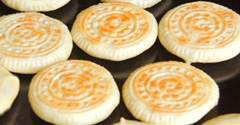About
A Brief History of Shanxi Merchants
( chinadaily.com.cn)Hu Ping, president of the Chinese Business History Committee:
Once in feudal China there was a splendid period for business, though the whole business was not very well developed in China. This period was critical for economic and cultural development in ancient China. Shanxi merchants, taking up the dominant position in the business sector, could be regarded as the leader of this period.
Fang Xing, a researcher of the Chinese Academy of Social Science's Economy Institute:
The merchants' diverse commodities, investment amount, and staff size were all at the top among all the business groups at that time.
Zhang Limin, a researcher with the Tianjin Academy of Social Science's History Institute:
Shanxi merchants controlled several industries, such as all of the financial industry and part of the pigment industry. At that time their status was quite high as merchants.
Chao Xiao'ou, associate professor of Xiamen University's History Department:
In the western part of China, we could see that Shanxi merchants traveled to what is now Xinjiang, especially southern Xinjiang. In the southwest, they traveled to Guizhou and Sichuan. They also traveled to Southeast China.
Long Denggao, associate professor of the School of Economics at Qinghua University:
Shanxi merchants took advantage of a very critical chance in the history, the emergence of a unified market in China during the Ming (1368-1644) and Qing (1644-1911) dynasties, which allowed them to travel all around China.
The Business Sector at Shanxi (Jin): Before the Ming Dynasty (1368-1644)
Shanxi province enjoyed a long history of business investment. Early, even before the Qin Dynasty (221-206 BC), the business trade had already emerged in the southern part of Shanxi. According to a description of that time: "The market starts at midday, when people from all directions meet together with all kinds of commodities. People trade with each other until everybody gets what he or she wants."
In the Sui (AD 581-618) and Tang (AD 618-907) dynasties, new commercial towns appeared, such as Zhangzhou, Taigu, Pingding, and Datong. After the city of Taiyuan became the northern capital of the Tang Dynasty, Shanxi saw a business boom.
During the Song Dynasty (960-1279), famous regional merchants included merchants groups from southern Sichuan (Shu Nan) and northern Sichuan (Shu Bei). Shanxi and Hui merchants also became well known. At that time, Shanxi bordered the Song and Liao kingdoms. Song needed to import warhorses from Liao, while the latter was also in need of handicrafts from the former. Shanxi hence became an important trade market then.
When it came to the Yuan Dynasty (1271-1368), the business activities were inevitably affected by war to some extent. Nevertheless, the separation of Song, Liao, and Jin kingdoms, ended with the unification of Yuan, which actually enlarged the territory of business activities. From the Travel Journal of Marco Polo, we could learn that, "Merchants original from Taiyuan to Pingyang (Linfen) spread all over China, acquiring huge benefits."



